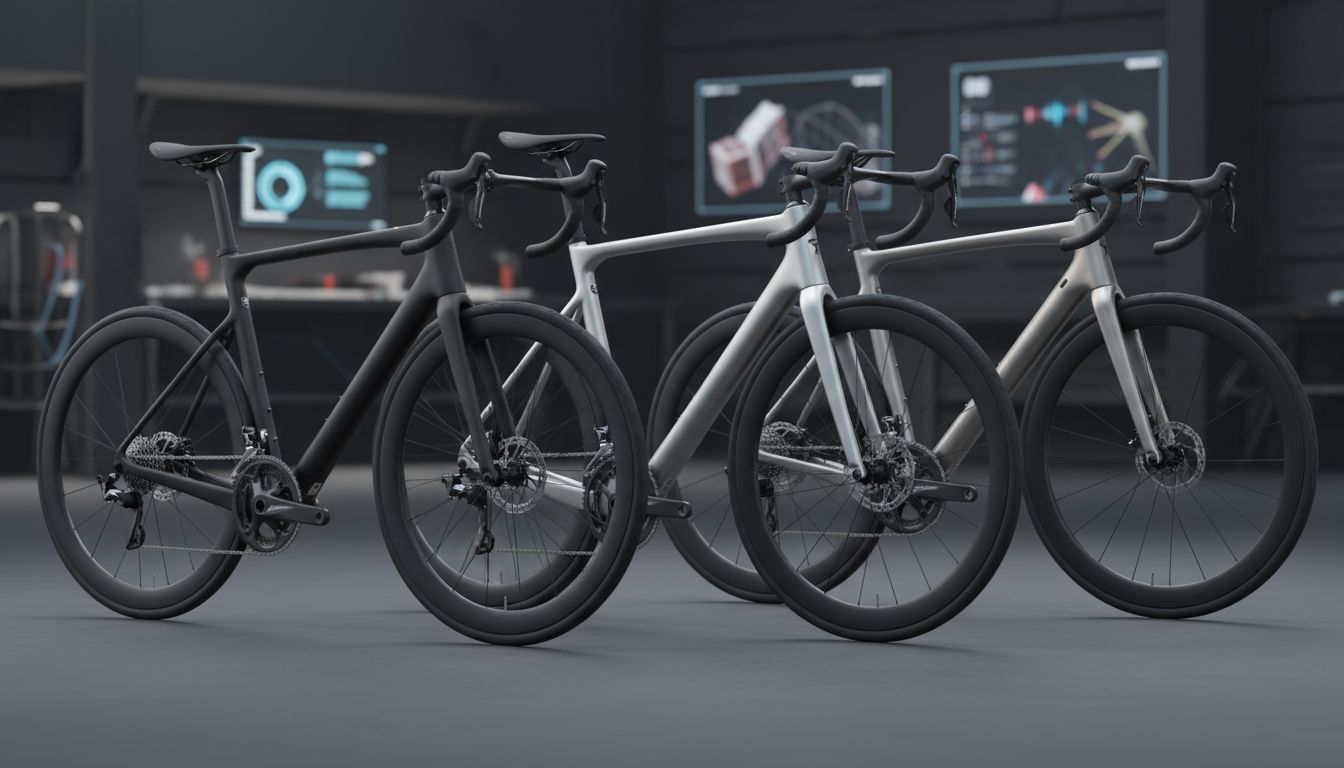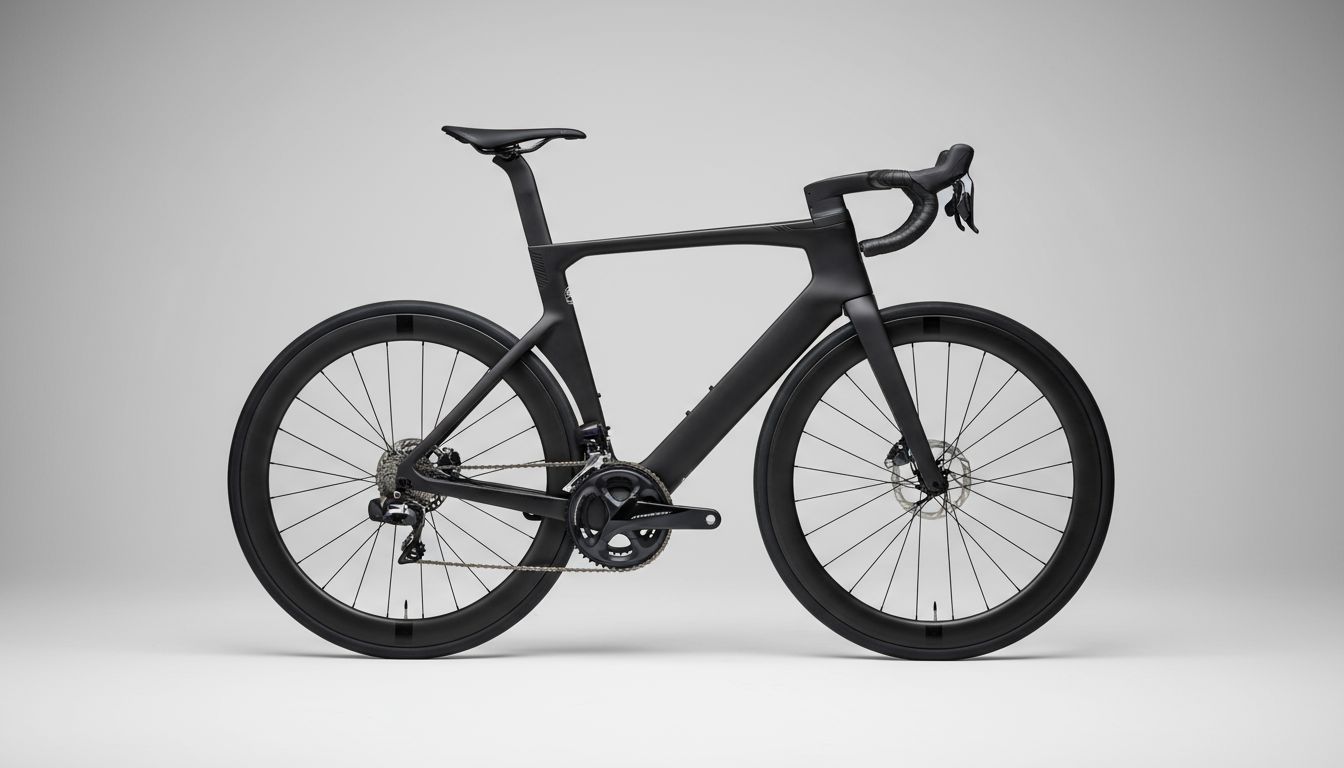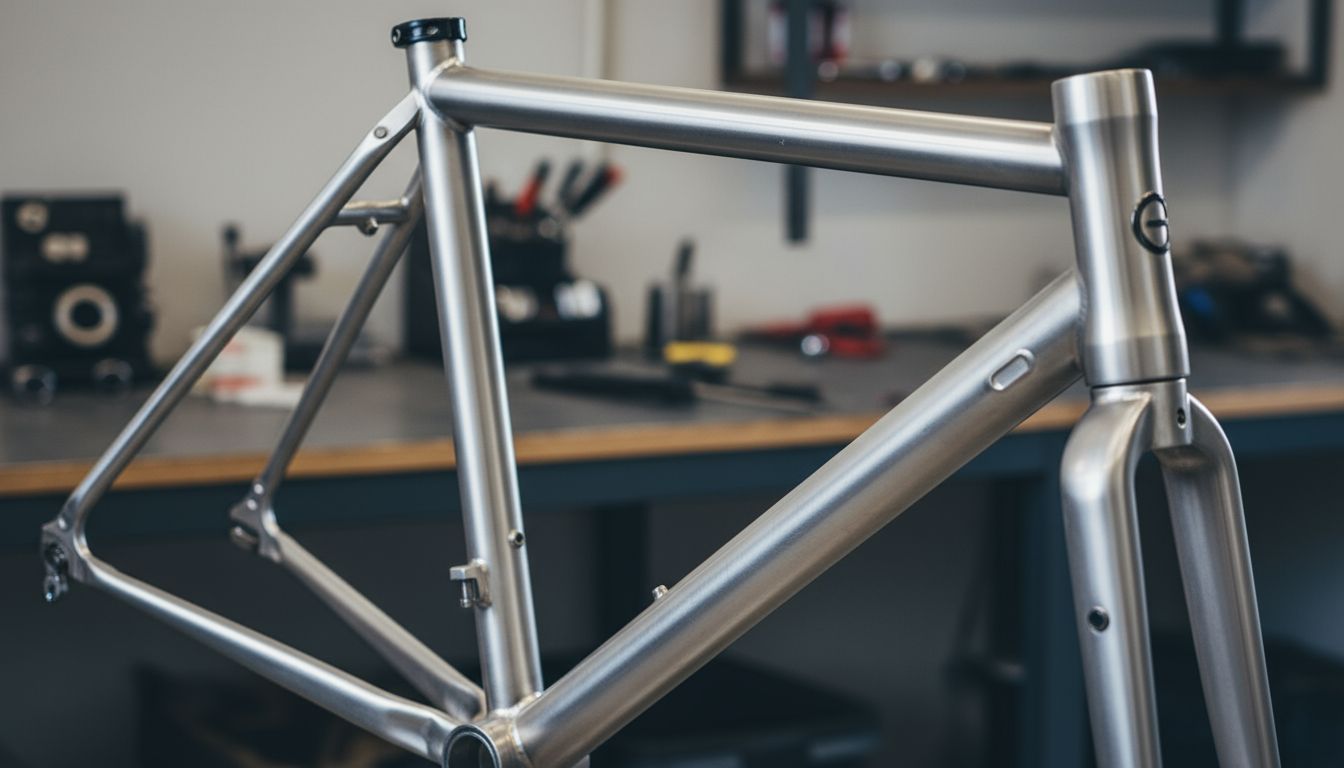
The 2025 Landscape of Bicycle Frame Materials
Choosing the right frame material for your bicycle is a pivotal decision that significantly impacts your riding experience. In 2025, the options remain broadly the same – carbon fiber, aluminum, and titanium – but the technologies and nuances within each have evolved considerably. This article provides a detailed comparison of these materials, helping you navigate the complexities and make an informed choice based on your riding style, budget, and priorities. We'll delve into the specifics of weight, stiffness, durability, comfort, and cost, providing an expert-level analysis that's still easy to understand.


Carbon Fiber: The Lightweight Champion with Unmatched Customization
Advantages of Carbon Fiber Frames
Carbon fiber has established itself as a dominant force in the cycling world, particularly for high-performance road bikes and mountain bikes. Its primary advantage lies in its exceptional strength-to-weight ratio. Carbon fiber frames are significantly lighter than aluminum or titanium frames of comparable strength, allowing for faster acceleration, easier climbing, and improved overall handling. This weight advantage is crucial for competitive cyclists and enthusiasts seeking peak performance. Furthermore, carbon fiber's unique manufacturing process allows for unparalleled customization. Frame designers can precisely control the shape, thickness, and orientation of the carbon fibers to optimize stiffness in specific areas while maintaining compliance in others. This allows for a frame that's both incredibly efficient and surprisingly comfortable, a characteristic previously unattainable with other materials.
Disadvantages of Carbon Fiber Frames
Despite its numerous benefits, carbon fiber isn't without its drawbacks. The most significant concern is its vulnerability to impact damage. While incredibly strong under tensile loads, carbon fiber is susceptible to cracking or delamination from sharp impacts, such as crashes or rock strikes. Repairing carbon fiber frames can be costly and complex, often requiring specialized expertise. Additionally, high-quality carbon fiber frames tend to be significantly more expensive than aluminum or titanium alternatives. This cost barrier can make carbon fiber bikes inaccessible to many cyclists. Finally, there are concerns about the environmental impact of carbon fiber production and disposal, although advancements are being made in recycling and sustainable manufacturing practices.
Aluminum: The Affordable and Reliable Workhorse
Advantages of Aluminum Frames
Aluminum remains a popular choice for bicycle frames due to its affordability, durability, and widespread availability. Aluminum frames are significantly less expensive than carbon fiber or titanium frames, making them an attractive option for budget-conscious riders. Aluminum is also a highly durable material, capable of withstanding considerable abuse without catastrophic failure. This makes it a practical choice for commuting, touring, and recreational riding. While not as lightweight as carbon fiber, advancements in aluminum alloy technology and manufacturing techniques have resulted in lighter and more responsive aluminum frames in recent years. Modern aluminum frames often feature hydroformed tubing and butted construction, allowing for optimized stiffness and weight distribution.
Disadvantages of Aluminum Frames
The primary disadvantage of aluminum frames is their ride quality. Aluminum tends to be stiffer than carbon fiber or titanium, resulting in a harsher and less comfortable ride, especially on rough roads or trails. This stiffness can also lead to increased fatigue on long rides. While modern aluminum frames have improved in terms of comfort, they still generally lack the vibration damping properties of carbon fiber or titanium. Additionally, aluminum frames are more prone to fatigue failure over time compared to titanium frames. Repeated stress and strain can eventually lead to cracks and structural weakness, although this typically occurs after many years of use.
Titanium: The Ultimate Blend of Performance and Longevity
Advantages of Titanium Frames
Titanium bicycle frames are renowned for their exceptional combination of strength, durability, comfort, and longevity. Titanium possesses a high strength-to-weight ratio, making it lighter than steel or aluminum while still being incredibly strong. Titanium frames are also highly resistant to corrosion and fatigue, ensuring years of reliable performance. Unlike carbon fiber, titanium is not susceptible to catastrophic failure from impact damage. Instead, it tends to dent or bend upon impact, which can often be repaired. Furthermore, titanium offers a unique ride quality that's often described as "springy" or "lively." It effectively absorbs road vibrations, providing a smooth and comfortable ride, while also maintaining a responsive and efficient feel. This makes titanium an excellent choice for long-distance riding, touring, and gravel riding.
Disadvantages of Titanium Frames
The primary disadvantage of titanium frames is their cost. Titanium is a relatively rare and expensive material, and the complex manufacturing process required to create titanium frames further contributes to their high price tag. Titanium frames are typically more expensive than comparable carbon fiber or aluminum frames. Additionally, titanium frames are generally heavier than carbon fiber frames, although they can be lighter than some aluminum frames. While titanium offers a comfortable ride, it may not be as stiff or responsive as a high-end carbon fiber frame, which can be a concern for competitive cyclists seeking maximum performance. Finally, the aesthetics of titanium frames can be polarizing. Some riders appreciate the raw, industrial look of titanium, while others prefer the sleeker and more customizable appearance of carbon fiber.
Comparing Key Characteristics: A Detailed Breakdown
Weight Comparison
Carbon fiber generally wins the weight battle. High-end carbon frames can weigh as little as 800-900 grams. Aluminum frames typically weigh between 1200-1600 grams, while titanium frames fall in the 1400-1800 gram range. These are just general estimates, and the actual weight can vary depending on the frame size, design, and componentry.
Stiffness and Power Transfer
Carbon fiber allows for the greatest control over stiffness. Frame designers can strategically reinforce areas for optimal power transfer. Aluminum can be very stiff, but it often comes at the expense of comfort. Titanium offers a good balance of stiffness and compliance, providing efficient power transfer while maintaining a comfortable ride.
Durability and Longevity
Titanium is the clear winner in terms of durability and longevity. It's highly resistant to corrosion, fatigue, and impact damage. Aluminum is also durable but more prone to fatigue failure over time. Carbon fiber is strong but susceptible to impact damage.
Comfort and Ride Quality
Titanium and carbon fiber generally offer the most comfortable ride quality. Titanium absorbs vibrations effectively, while carbon fiber can be designed with specific compliance zones. Aluminum tends to be the harshest, although modern aluminum frames have improved in this area.
Cost Analysis
Aluminum frames are the most affordable, followed by carbon fiber. Titanium frames are the most expensive, often costing significantly more than comparable carbon or aluminum frames.
The Future of Bicycle Frame Materials: 2025 and Beyond
The bicycle industry is constantly evolving, and advancements in materials science and manufacturing technology are continually pushing the boundaries of what's possible. In 2025, we can expect to see further refinements in carbon fiber layup techniques, resulting in even lighter and more durable frames. Advancements in aluminum alloy technology will likely lead to lighter and more comfortable aluminum frames. And innovative manufacturing processes could potentially bring down the cost of titanium frames, making them more accessible to a wider range of cyclists. Furthermore, we may see the emergence of new materials and composites that offer unique performance characteristics. Regardless of the specific material, the future of bicycle frames will undoubtedly be driven by a relentless pursuit of lighter weight, increased stiffness, improved comfort, and enhanced durability.
Conclusion
Ultimately, the best bicycle frame material for you depends on your individual needs, priorities, and budget. If you prioritize weight savings and maximum performance, carbon fiber is the ideal choice. If you're looking for an affordable and durable option for commuting or recreational riding, aluminum is a great value. And if you want a blend of performance, comfort, and longevity, titanium is the ultimate investment. By carefully considering the pros and cons of each material, you can make an informed decision that will enhance your cycling experience for years to come. Remember to test ride bikes with different frame materials to get a feel for their unique characteristics. Happy riding!


